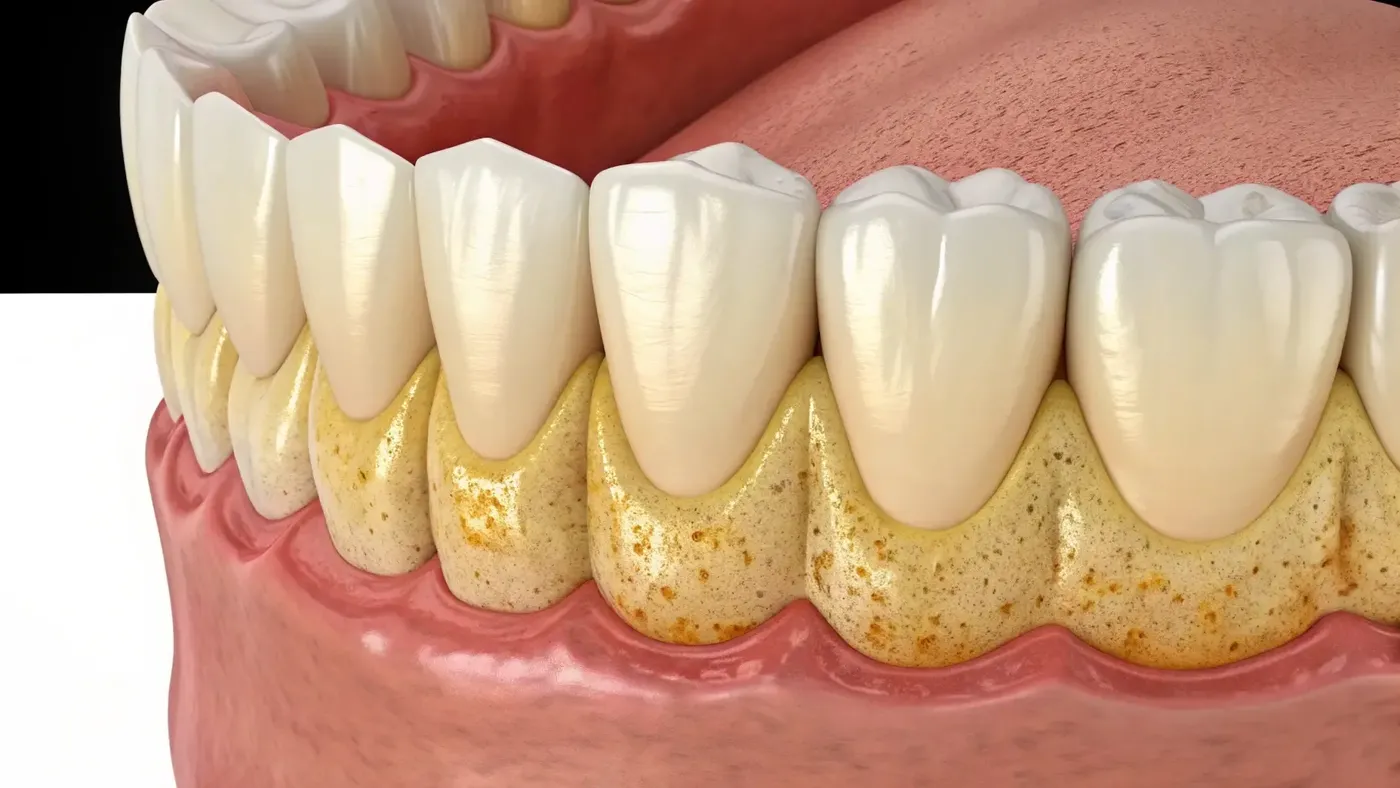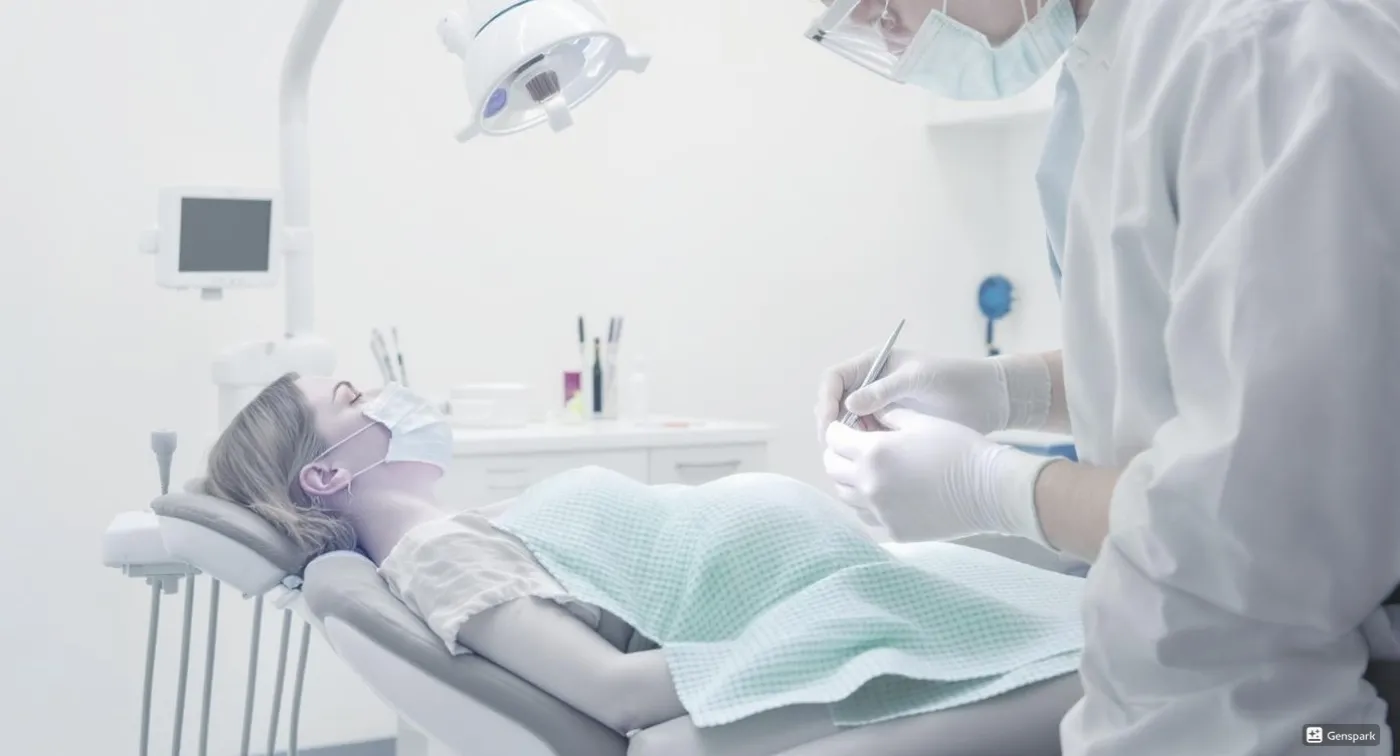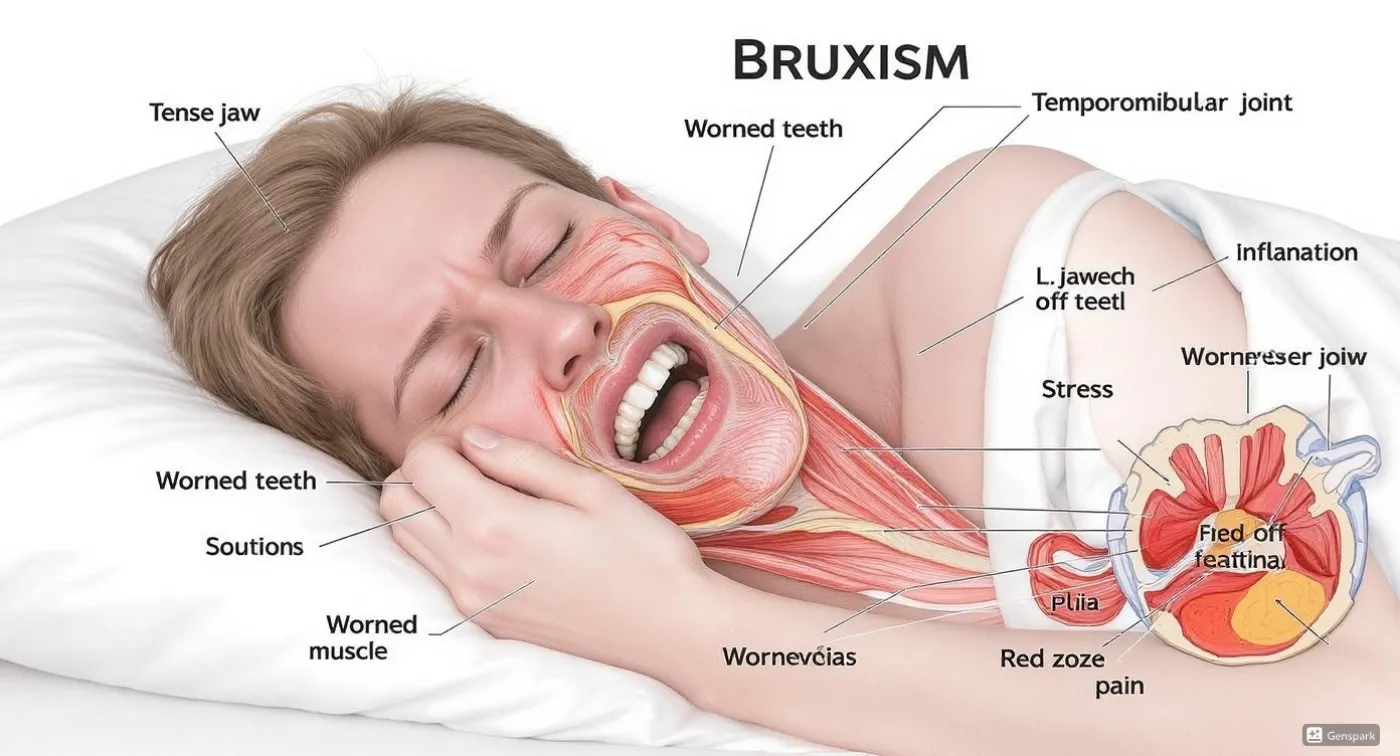Dental tartar is a serious threat to the health of gums and teeth, causing cavities and periodontitis. Regular professional cleaning and proper oral hygiene help prevent complications.

Dental Tartar: What It Is, Causes, and Removal Methods
According to the WHO, dental tartar is found in about 75% of the adult population. The amount of deposits increases with age.
What is dental tartar?
Dental tartar is a hard deposit that forms on the surface of teeth as a result of plaque mineralisation under the influence of saliva components. This process occurs gradually. Without proper oral care, dental tartar becomes a serious threat to oral health. These deposits cannot be removed by yourself. To remove them, you need to visit a dental clinic. Otherwise, bad breath, an increased risk of cavities, gum inflammation, and even tooth loss may develop.
How does dental tartar form?
To maintain oral health, proper care is essential. It is important to remove dental plaque - a thin film made up of bacteria, food residues, and mucus. However, no matter how thoroughly we brush our teeth, it is impossible to completely eliminate it. Plaque mostly accumulates in hard-to-reach areas, especially between teeth. Initially, these are soft deposits that can be easily removed. But if left untreated, over time, under the influence of minerals, they harden. This is how dental tartar forms. These deposits can no longer be removed by a toothbrush and require professional dental treatment.
Causes of dental tartar formation
The answer to why tartar forms on teeth cannot be simple. Various factors contribute to its appearance. Among the most common causes are:
- Insufficient or improper oral hygiene. Superficial brushing, use of a soft or worn-out toothbrush, ineffective toothpaste - all these contribute to plaque accumulation. Chewing predominantly on one side also leads to uneven cleaning of teeth.
- Smoking. Tobacco smoke alters the composition of saliva, slows down the regeneration of the oral mucosa, and promotes the formation of persistent plaque. In smokers, tartar forms much faster and has a darker color.
- Improper diet. Lack of hard plant-based foods such as fresh apples and carrots prevents natural cleaning of teeth during chewing. Rapid plaque formation on teeth also occurs due to a high carbohydrate intake.
- Malocclusion. Incorrect bite may prevent full cleaning of tooth surfaces. This is especially difficult in cases of crowded teeth.
- Genetic factors. Individual characteristics, including the chemical composition of saliva, tooth structure, or metabolism rate, can influence susceptibility to tartar formation.
- Certain medical conditions. For example, dry mouth (hyposalivation) or excessive saliva production (hypersalivation) disrupts the microbial balance. This creates favorable conditions for plaque mineralisation. Chronic gastrointestinal diseases, endocrine disorders, hormonal changes can also affect saliva composition and cause tartar formation. Antibiotic use can also disrupt the oral microflora.
Only a doctor can determine the specific cause of tartar formation in each case. Often, the problem is complex and requires a comprehensive treatment approach.
Dental Tartar in Children
Nowadays, dental tartar is increasingly found in children. In young patients, the enamel is thinner and more sensitive than in adults, making it more vulnerable to bacterial effects. The most common factors contributing to plaque accumulation are:
- Insufficient oral hygiene. Children usually do not pay enough attention to brushing their teeth. Without adult supervision, plaque builds up, which over time leads to tartar formation. This problem is especially acute when parents stop helping their children brush too early. At a young age, a child is not always able to perform this procedure properly on their own.
- Excessive consumption of sweets. Sugar is a nutrient medium for bacteria that promote plaque formation. Sticky sweets and carbonated drinks further accelerate this process.
- Salivary flow disorders. In children, as in adults, saliva can sometimes be too viscous. In this case, it does not perform its protective functions and fails to wash bacteria away from the teeth.
It is important to instill correct hygiene habits in children from an early age and to develop a responsible attitude toward their health. This will help avoid many problems in the future. Parents should teach their child how to brush teeth properly and make it a daily ritual. The key is to lead by example.
Symptoms of dental tartar
Recognising the problem is not difficult, especially if you pay close attention to the condition of the oral cavity. The first noticeable sign is visual changes on the enamel. What does dental tartar look like? Usually, it appears as yellowish or brown deposits visible along the gum line and on the inner side of the lower incisors. Over time, these deposits may darken due to coffee, tea, or smoking. Tartar is also present in the interdental spaces and areas unreachable by a toothbrush. All this significantly reduces the aesthetic quality of the smile.
Other common signs of dental deposits include:
- Roughness of the enamel — the tooth surface loses its smoothness, which can be easily felt by the tongue, especially if tartar is abundant;
- Unpleasant breath — a result of the active bacteria in the plaque;
- Redness and swelling of the gums, enlargement of gum papillae;
- Bleeding during tooth brushing or flossing;
- Increased tooth sensitivity;
- Gum recession exposing the tooth neck.
If any of these symptoms appear, it is necessary to see a dentist. Dental tartar will not disappear on its own.
Consequences of Having Dental Tartar
Tartar on teeth is not just an aesthetic problem. Its presence can seriously affect oral health, especially if you do not visit the dentist on time. The main risks include:
- Development of tooth decay. Bacteria accumulating on the enamel surface actively destroy it.
- Gingivitis and periodontitis. Pathogenic microflora irritates the gums and causes inflammatory processes. Gingivitis can develop, which may progress to periodontitis without proper treatment. If left untreated, this disease leads to bone tissue loss and loosening of teeth.
- Other oral problems. Constant accumulation of bacteria increases the risk of infections, formation of periodontal pockets, and various complications. Prolonged exposure to bacterial plaque may also cause additional difficulties when installing fillings, crowns, or braces in the future.
- Development of diseases in other organs and body systems. The presence of pathogenic microflora in the oral cavity can cause gastrointestinal problems. Infection can easily enter the stomach, causing various illnesses. Through inflamed gums, bacteria may enter the bloodstream, increasing the risk of cardiovascular diseases, including atherosclerosis, heart attack, or stroke.
To maintain oral health, do not ignore the problem of dental tartar. The earlier you start treatment, the less damage it will cause.
Types of Dental Tartar
Depending on its location, dental tartar is divided into two types:
- Supragingival tartar. Forms on the visible part of the tooth above the gum line. It is easily seen with the naked eye. When touched, the tooth feels rough. Supragingival tartar often appears in both children and adults and can be removed during standard professional cleaning.
- Subgingival tartar. Located deeper - in periodontal pockets below the gum line. It has a denser structure, dark color (from brown to almost black), and tightly adheres to the root surface of the tooth. This type of tartar is not visible during examination, so dentists use special instruments for diagnosis and removal. Subgingival tartar is the main cause of chronic gum inflammation and tooth loss in adults.
Both types of tartar pose a serious threat to oral health, so timely detection and professional intervention are essential for maintaining healthy teeth and gums.
Methods of Removing Plaque and Dental Tartar
Since it is impossible to remove dental tartar at home (internet methods may be ineffective and even harmful to enamel), you need to visit a dentist. The doctor will examine you and determine the best removal method. These may include:
- Mechanical (manual) cleaning. Used for a small amount of tartar or increased tooth sensitivity. The dentist uses manual instruments during the procedure.
- Ultrasonic cleaning. The most popular and painless method of tartar removal. A special ultrasonic scaler generates microvibrations that effectively break down deposits without damaging the enamel.
- Air Flow cleaning. This method removes plaque and pigmentation. It uses a stream of a mixture of air, water, and special powder. This method is painless and often used for treating children and pregnant women.
If necessary, tartar removal is performed under local anesthesia. After cleaning, teeth are polished with special professional pastes that smooth the surface. This helps reduce plaque accumulation on the enamel. If needed, the dentist may also perform fluoride treatment to strengthen enamel and protect against tooth decay.
Prevention of Dental Tartar Formation
The best way to fight dental tartar is to prevent its formation. Key recommendations for prevention include:
- Maintain oral hygiene rules. Brushing your teeth twice a day with fluoride toothpaste is the foundation of prevention. Replace your toothbrush every 2–3 months. Equally important is using dental floss, which cleans the interdental spaces from food residues and plaque - areas where a toothbrush cannot reach. Additionally, mouth rinses can be used to reduce bacteria and freshen breath. They should be used after flossing and after every meal. If rinsing is not possible after eating, rinse your mouth at least with clean water.
- Visit the dentist regularly. Even with proper home care, professional dental tartar removal at a private dental clinic every 6 months remains essential. The dentist will timely detect deposits, remove them, and provide hygiene recommendations.
- Change your diet. Limit sugar, sweet drinks, coffee, and tea - they contribute to plaque formation and staining. Your diet should include vegetables, fruits, and products rich in calcium and vitamins that strengthen enamel.
- Drink enough water throughout the day. Proper hydration not only improves general health but also helps maintain oral cleanliness. Water washes away food residues and reduces acidity in the mouth.
- Avoid harmful habits. Smoking not only promotes the formation of dark tartar but also weakens the gums, contributing to inflammation. Quitting this habit improves overall oral health.
Prevention does not require much effort - only regularity. By following simple rules, you can keep your teeth healthy and your smile radiant for a long time.
Conclusion
Dental tartar is not just an aesthetic issue but a real threat to the health of your teeth and gums. Its accumulation can lead to inflammation, bleeding gums, bad breath, and even tooth loss. It is impossible to remove tartar on your own — professional dental care is needed. Do not delay your visit to the dentist: it is better to prevent the problem than to deal with its consequences.
Taking care of your oral cavity is an investment in your health, confidence, and beautiful smile.
Request a call
We will contact you to schedule a convenient time for your consultation and connect you with the right specialist
More articles
We have gathered all the most interesting posts from our specialist doctors in our blog just for you
Dental Treatment During Pregnancy: Myths and Facts

Bruxism (Teeth Grinding) and How to Get Rid of It Forever


Request a call
We’ll get back to you shortly!

Leave a Review
Your feedback means a lot to us!




